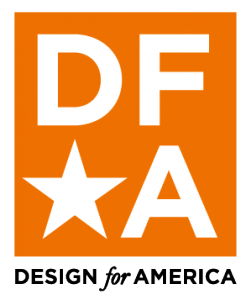This week we were lucky enough to have two guest speakers, both of which were very passionate about the work that they do. The first guest speaker, Alan Amling, who works in Corporate Strategy for UPS. Alan talked about how 3D printing has changed the way UPS operates. As a supply chain management major, I really enjoyed listening to Alan speak about how 3D printing can change the supply chain. This is something I never thought was an option or would make the supply chain more efficient, but Alan informed us all how 3D printing is disrupting the industry. One thing that really stood out to me during Alan’s talk was how he made the reference to shoes being the ‘best fit’ and not the ‘perfect fit.’ This made me really excited about 3D printing and how things we once thought could only be ‘best fit’ could possibly be ‘perfect fit’ and formed to each and every one of us individually.

The second guest speaker we had was Dot Silverman. Dot graduated from Pomona College with a Bachelor’s degree in physics with an emphasis in engineering. Dot was very excited about her presentation and all of the interesting things she has worked on in the past. It was almost impossible to not want to know more about her projects because she was so passionate about all of them.

A few of the different projects she brought into our class was Foldscopes which are really cheap microscopes that allow students in underdeveloped countries that can’t afford real microscopes to explore areas in biology and other sciences. Another really intriguing project Dot brought into the class was the miniPCR DNA Data Discovery System. Although these were a bit more expensive, she said they were still pretty cheap relative to similar products on the market. I loved all of the work that Dot has done in her past, and it actually made me interested in biohacking. I was excited when a student in my class asked Dot if they could still get into biohacking even if they have no past experience. Dot was very reassuring and said if you are interested enough, it is never too late to get involved. This made me feel better because I have absolutely no experience in the biohacking world, but was very intrigued by Dot’s presentation.
After the two guest speakers, we broke up into teams to further discuss ideas for our final project. My team came up with some good ideas, but I think we could challenge ourselves a little more. We came up with the idea of a filter for pour over coffee. This would allow the user to pour all the water at once and our object would slowly filter the water by itself so the user wouldn’t have to. Another idea we had was to create a platform to place your curling iron, straightener, or clothes iron on while they are hot and you are not using it. This is similar to the iPhone charging platform, but designed to hold larger objects and heat. The last idea we had was to create something similar to the idea we had in class last week using the Harvard Robotics Toolkit that Dot introduced us to. We would make a watch that would draw blind people in the direction of someone they are trying to find. I would like to do this project because I think it would challenge our team and maybe we could come up with something really great.

